
What you need to know when setting successful voice over rates
This article has research and tips from voice over experts to help you learn more about voice over rates, and how to set and negotiate your own successful voice over rates with real-world examples.
What are voice over rates?
Voice over rates are specifically set and negotiated according to industry standards. Subsequently, in order to establish a long-term voice over career, you first have to learn what are voice over rates, and how to set successful voice over rates according to what is fair and acceptable. This involves taking time to understand the foundation of voice over rates as well as researching information about in-depth pricing.
What are voice over rates based on?
Every choice you make when setting and quoting voice over rates has a knock-on effect on the voice over industry as a whole. It also sets the scene for how clients will collaborate with you and future voice actors.
This is because voice over jobs are connected to industries that typically lead to repeat work and word-of-mouth referrals if you follow best practices. This not only aligns with the voice over industry but adds to its longevity.
Many people who haven’t worked with VO talent, have no idea what a fair rate is. It’s our job to educate them.
Jessica Taylor
The foundation of voice over rates
We could compare voice over rates to price tags.
They both represent the cost of buying something. In voice over, these rates are the amounts that voice actors charge for their services and recordings. And just like every item at a supermarket has its own tag, each voice over varies according to these key factors:
- The usage of a recording: which platform/s it is used on, and for how long.
- Geographic locations and voice over unions.

What is a usage fee?
This is an amount charged to cover ‘using’ a voice over.
Example 1: A company uses a recording for a branding video that lives on its website.
Example 2: A company uses a recording for a commercial that’s played state-wide.
This type of usage plays an integral part in voice over pricing as each category and sector varies. There is never any one-price suits-all approach.
“A tagline for a national TV spot could run for years, and if VO talent does not factor in the usage for some kind of buyout fee or residual payment for incremental additional usage, then they are giving up a large portion of the pie.”
Debbie Grattan
What is a buyout?
Buyout fees are what clients pay to ‘buy’ the use of your recording for a certain amount of time.
While it’s often associated with being used ‘forever,’ all commercial broadcast buys (tv, radio, digital) are also buyouts. The common usage terms, 13-week, 6-months, and 1 year, are all buyouts. And ‘buyout’ is also used in non-broadcast work which is usually in-perpetuity (forever) by nature.
For example, a client can pay to use your recording for 6 months on social media. Or, they could buy it for use in perpetuity. And on this point, it’s important to note if royalties should be paid out according to specific time frames that the recording is used or if future conflicts could cause limitations.
“If I agreed to an in-perpetuity buyout on a project for a national bank, I wouldn’t be able to offer exclusivity to another bank because I have already have a voice over for one of their competitors floating around. So, be careful and think about what kind of work you hope to be doing down the road.”
Jessica Taylor
Non union voice over rates
Another key factor that influences voice over pricing is union memberships. For example, if a voice actor belongs to a union like SAG-AFTRA, it has its own rate guide that voice actors agree to adhere to. To learn more about how unions provide voice over work and its related voice over pricing, check out our research in the section, Union vs non union voice acting.
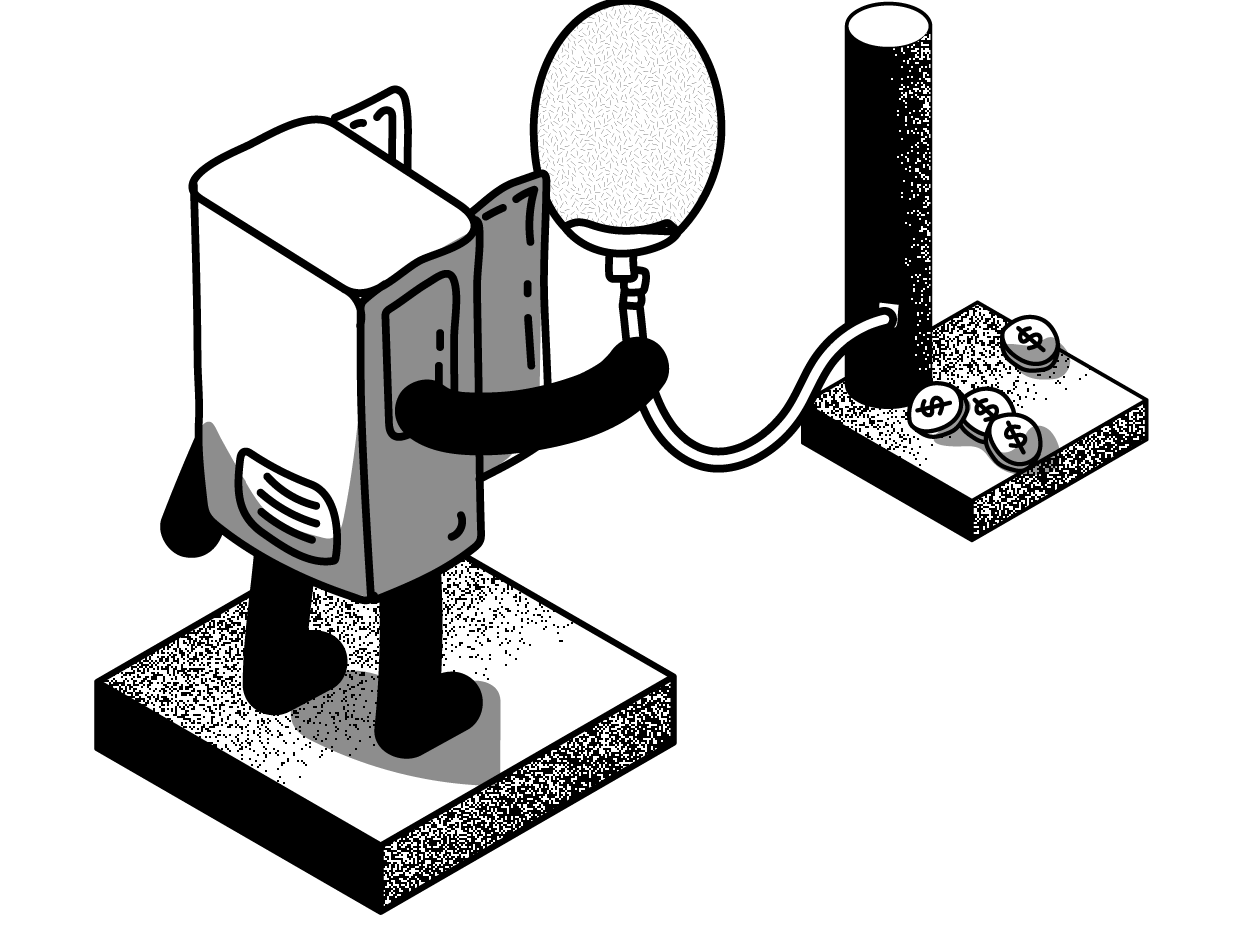
Additional services
Clients often ask for additional services. This can cover a wide range of services such as background music, revisions, pickups, copywriting, translation, re-reads, audio post-production, live session direction; all at an additional cost. These rates depend on factors such as how long, how much, and the gap between final delivery and the request for additional services. It’s important to have a set policy on your rates as it makes quoting and communicating with clients faster and more professional.
A guide to voice over rates
The best places to learn about industry standards are through the many helpful guides that provide reliable information on industry standards for voice over rates. One of the commonly used and respected guides is from the Global Voice Acting Academy: The GVAA Rate Guide.
David Toback, who helped create the guide with the GVAA shares that “it has great information about rates, the different genres, how to calculate the rates, what you should be looking for and also gives you a really solid foundation. Ultimately, it’s for your own business, knowledge, welfare, and voiceover journey. But it also helps the industry as a whole. For example, if someone says, ‘Hey, we have this narration we want you to do; it’s a corporate narration on the web.’ Well, what do those things mean? The guide helps to understand the terminology, genres, and what constitutes those genres.”
What are some of the helpful features?
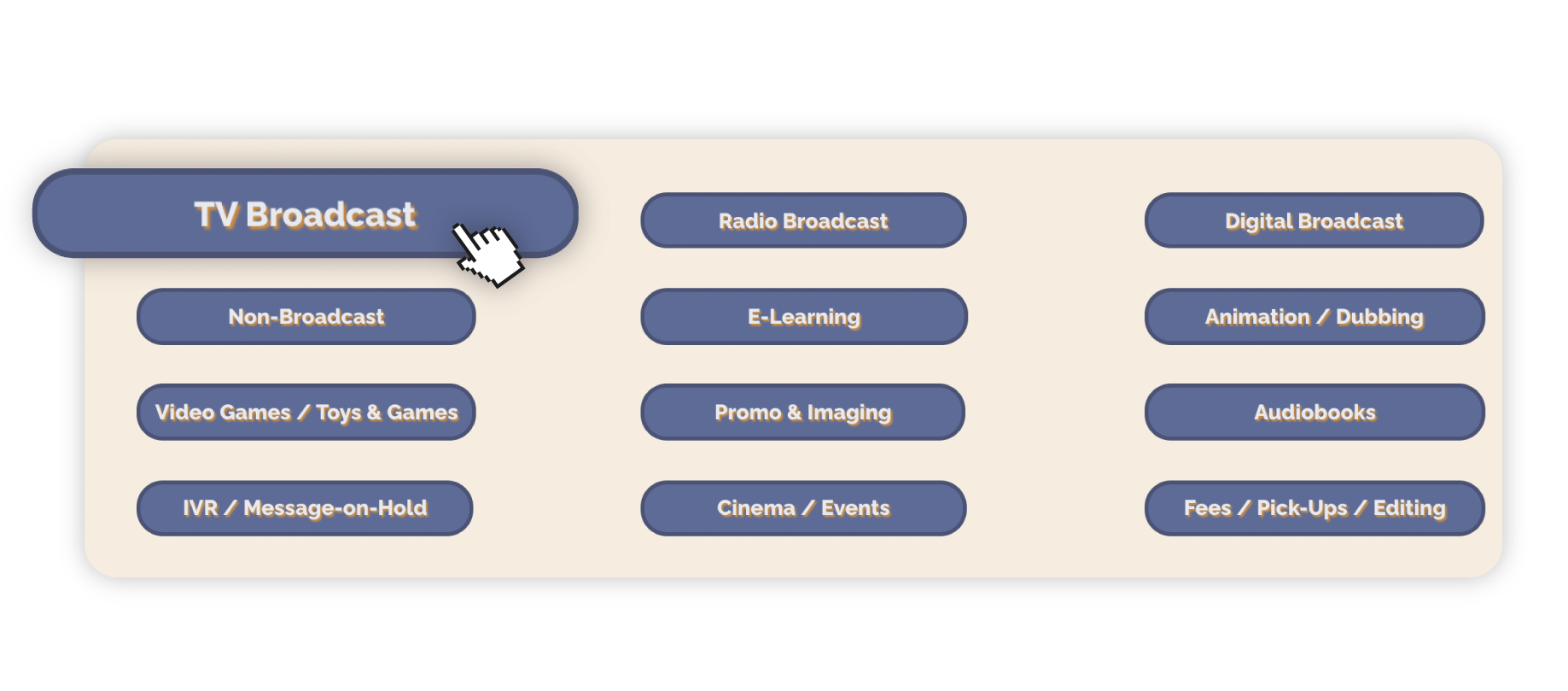
1: The guide is made up of 12 different categories so you can set your rates according to each industry and genre that you will be working in.
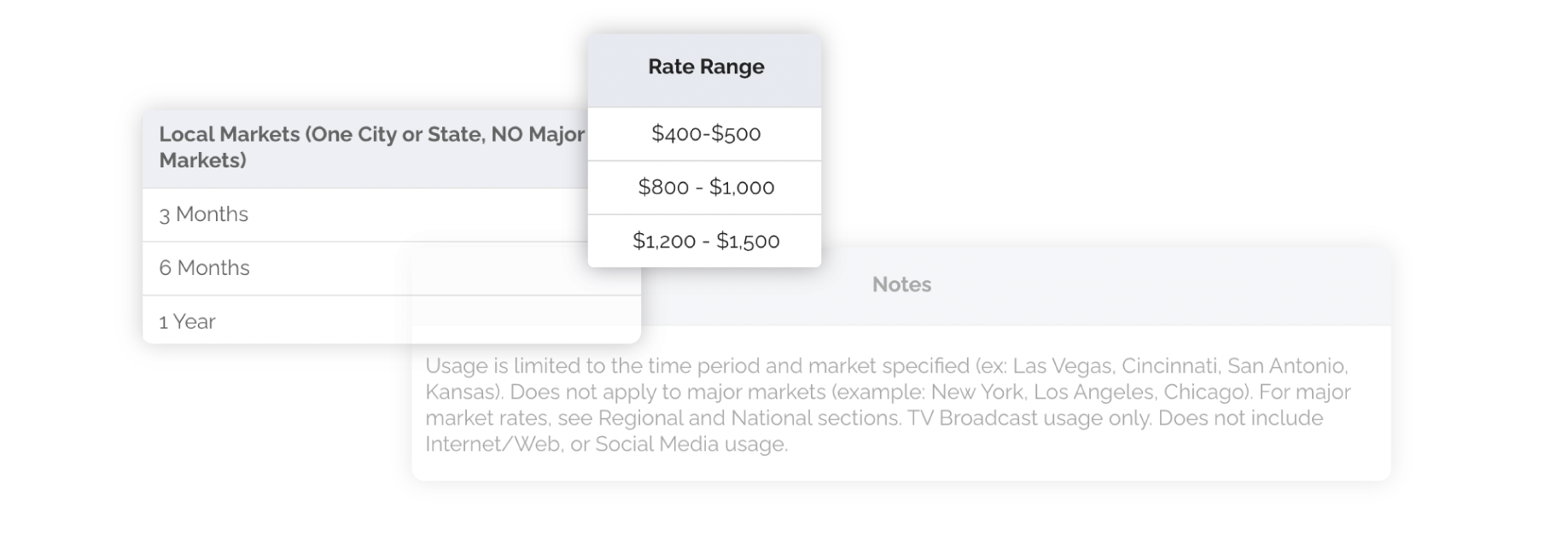
2: Each category offers a breakdown of the platform, usage, relevant rates, and helpful notes.
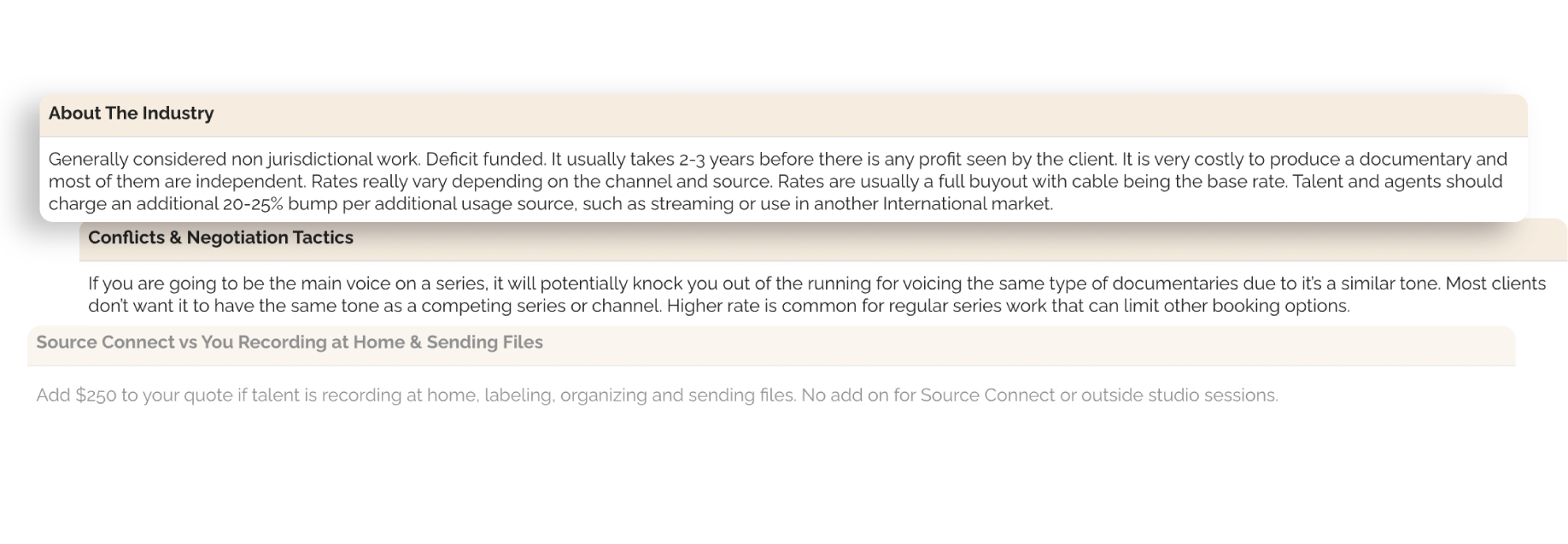
3: Another excellent section is how it provides tips about the industry, along with negotiation tactics.
“Think of it like an X-Y graph, where you have to look up the X and then find the Y. That’s kind of what the rate guide is, but you have to already know what the Ys and Xs are. That’s why you have to understand the foundation of rates, voiceovers genres, what the differences are, and how to spot the differences.”
David Toback
How to set your voice over rates
Once you get up to speed with a guide like the GVAA, you’ll have a better grasp of industry standard rates.
This can be used to create your own voice over pricing framework, which you can refer to whenever you need to quote on a project. It can also be stored in your voice over CRM (Customer Relationship Manager) by following a basic structure:
- Make a list of the voice over categories that you can/want to perform in
- Read up on the possible usages, lifespans, and advice for each genre
- Decide on the options that you are prepared to accept
- Create a rate card for each genre
- Plan flexibility for discounts, buyouts, and additional services
- Confirm the payment methods and currencies that you can accept
FAQ
Have a clear goal to facilitate a positive outcome. Setting a base rate can also be helpful. You could also start by asking a client how much they have to work with. They might surprise you by offering a higher fee than you expected! However, keep in mind negotiating doesn’t always reach a compromise.
Voice over pricing will typically be done in your local currency. But with foreign clients, factor in conversions and foreign exchanges. For example, a project might be quoted in Australian dollars, but when being paid through PayPal; the only available currency is US dollars. Being aware of these differences can prevent payment discrepancies and having to pull out of a project you’ve already started.
Each method has its pros and cons, so decide which works best for your voice over business. Do research on what’s available in your location and once you decide, double-check the details carefully! One wrong detail can seriously affect your payment.
You can learn how to set your voice over rates by consulting a respected rate guide such as The GVAA Rate Guide.
Voice over pricing examples
Now that you’re aware of what voice over rates are based on, where they can be found, and what you need to set your own; how does this translate into real-world application?
Take a look at some of these practical examples on how to quote for a project, based on usage, platforms, and lifespan. You’ll notice that experience, skills, studio abilities, and work hours do not play a role in the final price.


Closing advice
Being a voice actor is more than just auditioning, booking work, and reading scripts. Doing voice overs is your talent, skill, hobby, but most importantly your business. And like any successful business, it needs a secure foundation, short and long-term goals, and financial stability.
This is where consistency and flexibility are needed.

Consistency enables you to actively bring in voice over work and set the foundation for opportunities to find you.
Flexibility helps you to keep up with the ever-changing market that shifts according to buying habits and company goals.
If you balance these well, you’ll be able to set successful voice over rates that help you to establish a long-term voice over business.
Special thanks to our VO experts for their insightful contributions:
Debbie Grattan and Jessica Taylor
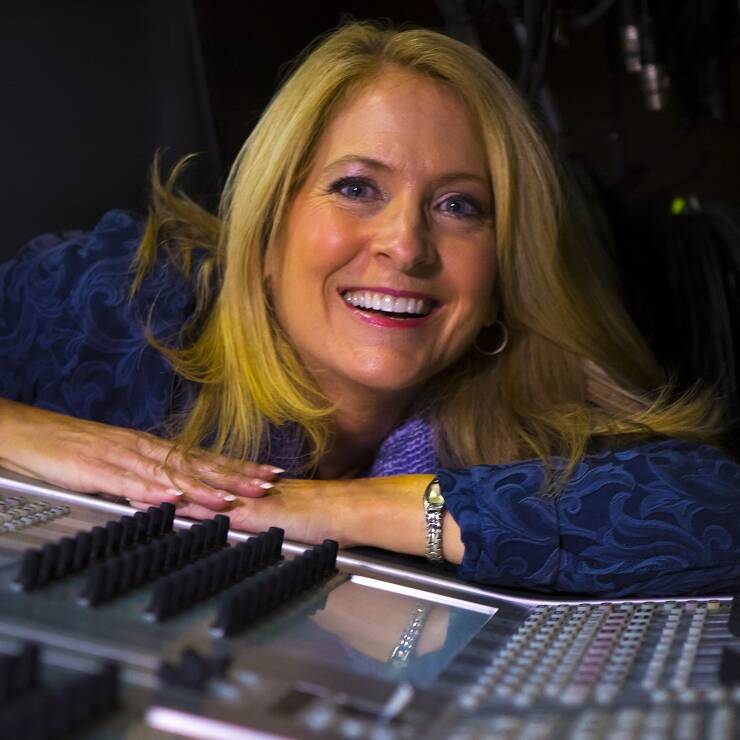
Debbie Grattan relates that “this career is a marathon. You need to be prepared for the amount of daily auditioning and rejection along with the relentless pursuit of not only a working salary but sometimes any paid work. But, there is always a quest for a new sound, so there’s some luck involved, as well as the talent and tenacity needed to succeed.”

Jessica Taylor advises you to “always ask to see the script before quoting. If it says ‘tap here’ and they’re asking for a radio rate, or if it’s written more like a TV spot, but they’re telling you it’s for radio, then you know you may not be getting the full story. Once you’ve agreed to a rate, it muddies the waters of your relationship with your client, so you want to get as much info as possible before agreeing to a rate.”
David Toback and Marc Scott

David Toback relates that you should “always put things into terms that clients understand so that you’re also educating them. They’re counting on you to be the pro to guide them. And that’s where the real power comes from. You’re not just telling them what the rate is or what you need to make. You’re educating them on our industry.

Marc Scott notes that “I offer value through my voice, performance, quality of my read, and the level of service I offer. Sticking to fair market rates helps me build a client base that respects my value. Those are the people I want long-term relationships with. That’s good for my business and the business of every voice actor who sets the same standard.
Looking for information on how much voice actors earn?
Boost your voice over work opportunites with a paid Voice123 membership
First-time paying members are eligible for a discount


